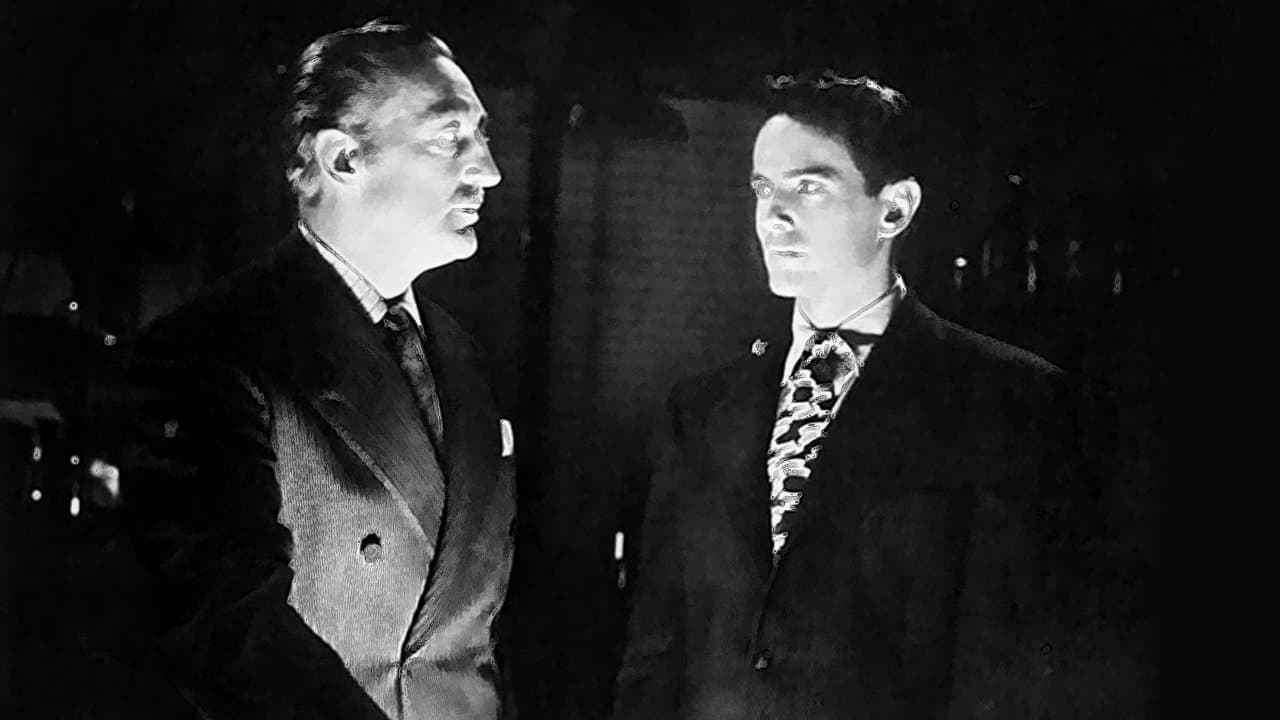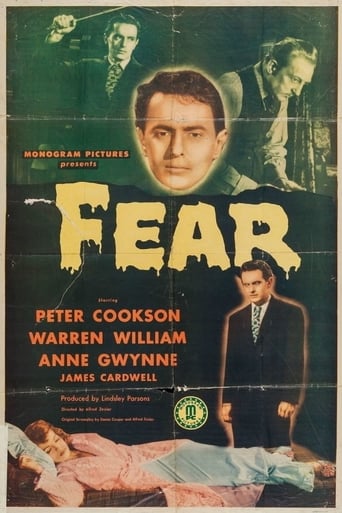

This is one of those "could have happened" film noir characters where the dark side of the protagonist is revealed to show exactly what somebody is capable of when pushed to the edge. The surprising element of it is that it came from the lowly Monogram studios, best known for the Bela Lugosi "mad doctor" movies, a series of hundreds of B grade westerns, and the Bowery Boys comedies.Medical student Peter Cookson is having financial difficulties and living a life best described as a mess. Landlady Almira Sessions is constantly badgering him for the rent and the state of his room, and he is in hock up to his neck. Learning that a local professor (Francis Pierlot) has stashed cash, he decides to plot the perfect murder, but it appears that once the crime has been committed, his sanity begins to suffer as well. Seemingly friendly police captain Warren William begins to "invite" Cookson down regularly to police headquarters while detective Nestor Paiva begins to follow Cookson and his new girlfriend (Anne Gwynne) around on their dates. Cookson's paranoia begins to grow as the police seem to be closing in on him. And then, bang, crash, the big twist. That's what gives this above average film noir a touch of class, along with the sly way William moves in on the troubled Cookson.The aging William, in his second to last film, gives a humorous and sly performance as the always happy police captain, carrying a pole and a hook as he tries to catch Cookson with the bate of evidence. Cookson seems to be on a front burner of the stove of sanity, getting hot and bothered by every little question that the police ask of him and every knock on his door from the sour pussed Sessions, a delightful character actress who could get laughs simply by sneering at the person she was snooping on and judging. Pierlot, as the victim, may look like some cute little old man, but his character is filled with darkness as well. This is smartly directed by Alfred Zeisler, an American born producer and director with much experience in Germany who used a lot of expressionism in his work especially as evidenced here. Many have pointed out the similarities to Fritz Lang which is evident in the elements Zeisler incorporates. Even at just 68 minutes, this compact little feature oozes in detail and keeps you glued, with top notch camera work by Jack Rose and brilliant editing by Ace Herman. In fact, it is so notable that this is one of the few times in my reviews that I wanted to single out the photographer and editor. The film noirs made by Monogram and Producers Releasing Corporation in the mid 1940's have completely withstood the test of time and deserve to be listed among the classics. "Fear" indeed is one of the very best of them.
... View MorePeter Cookson (Larry) is a student who needs money – his college fees and rent need paying and he can't do it. He goes to College Professor Francis Pierlot (Prof Stanley) who moonlights as a loan shark to help him out. Pierlot keeps all his money in his apartment in a safe and he's also a pretty unpleasant character. Is he unpleasant enough to be murdered? Yeah, probably .but will his attacker get away with things This film zips along and keeps us watching as to whether a crime will go unpunished and things are done in a suspenseful manner. Unfortunately, the ending doesn't quite live up to expectations so view this film as a bit of fun. You'll see what I mean.
... View More***SPOILERS*** Updated version of the Fyodor Dostoevsky crime classic novel "Crime and Punishment" as well as Fritz Lang's 1931 classic crime film "M" but with a major twist in the end. The person committing the crime does get what's coming to him but not the way he and we watching the film expected it to be. Medical student Larry Crain, Peter Cookson, is down to his last dollar and about to be evicted from his boarding house and thrown out of medical school for not being able to pay the tuition. Desperete for cash to pay his bills and stay afloat Larry goes to collage Prof. Stanley, Francis Preriot, who besides teaching medicine is also the school's unofficial loan shark as well.Things don't go that well with Larry and Prof. Stanley who demands a cut of 20% for every dollar he lends him even before Larry has a chance to pay it back. Talking things over with his fellow students about Prof. Stanley Larry hears that the professor doesn't believe in banks and has all his cash in his apartment. This gives Larry the bright idea of whacking Prof. Stanley and taking his money the next time he sees him to pay him back what he loaned him. Tricking Prof. Stanley to turn his back on him by trying to pawn off a silver ashtray Larry smashes his skull in with a fireplace poker killing him. But as Larry soon finds out the place where Prof. Stanley keeps his cash a steel safe-box isn't that easy to open. And when Larry finally opens it a number of Prof. Sanley's customers, fellow medical students, are banging at his door trying to get a loan from him.It's all downhill for Larry from then on with after whacking Prof. Stanley in his hast not taking a cent of the what seems like thousands of dollars that was in his safe-box but also freaking out the next day when an article he wrote for a local crime magazine was accepted and him being given a $1,000.00 check for it! There's also the fact that the police are now on the case of Prof. Stanley's murder with Larry feeling that their on to him as well and he'll soon to be arrested for it.****SPOILERS*** Guilt ridden and at the point of hysterics Larry's consciences starts to take over. With Det. Shaffer, Naston Paiva, seeming to stalk him at every turn and police Captain Burke, Warren William, taking a keen interest in him in the Prof. Stanley murder investigation. Larry now feels for certain that his goose or butt is going to soon be cooked in the state's electric chair. The surprise ending in the movie takes a while to digest in that it come on so unexpectedly that all the characters in it have to be reintroduced to us. That's after Larry gets away Scott-free as an innocent but mentally unstable man the house painter,Earnie Adams, confessed to the murder that he in fact committed!
... View MoreThe dream (or nightmare) structure was a staple of the noir cycle; The Woman in the Window, Fear in the Night, and its remake Nightmare were some of the films that employed this device. Far from a cop-out, it was a way of packaging a rather subtle psychological insight: that our dreams expressed our conflicts between our superegos and our ids. (In a later film with noirish roots, Brian De Palma's Body Double, the "story" of the movie similarly sketched the protagonist's worst self-estimation, triggered by a claustrophobic episode.)In Fear, a medical student (Peter Cookson) is on the brink of abandoning school because his money has run out; in frustration, he murders a professor who moonlights as a pawnbroker. Questioned by the police, he ill-advisedly spouts warmed-over Nietzsche like the effete killers in Hitchcock's Rope. Then, out of the blue, a scholarly periodical to which he submitted an article sends him a check for $1000 (!) -- the most implausible occurrence in the entire noir cyle. He grows more reckless, and suspicion continues to grow.... Fear was a low-budget Monogram programmer (clocking in at just over an hour) but looks a lot better, angled and shadowed like more lavish productions. It won't satisfy the literal-minded, but it's a decent enough way to while away a dark hour.
... View More